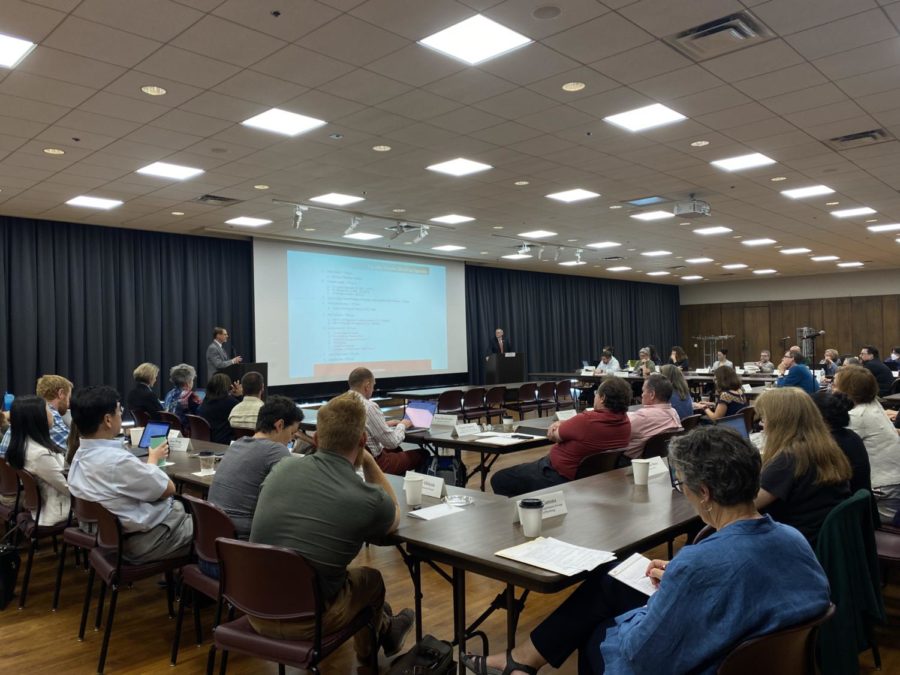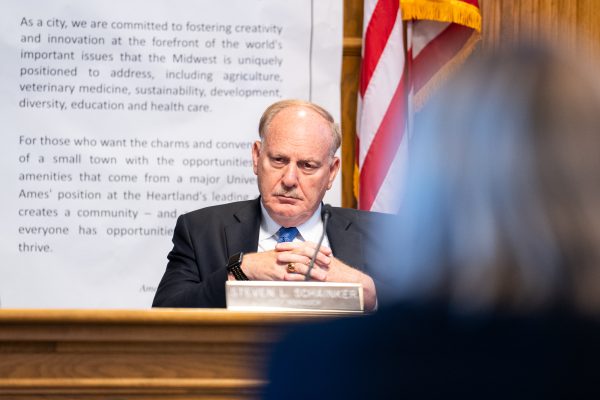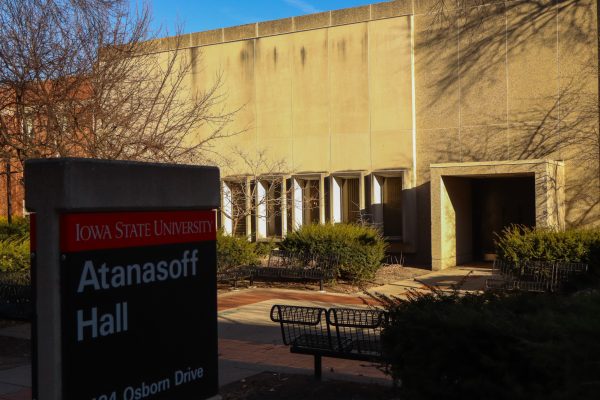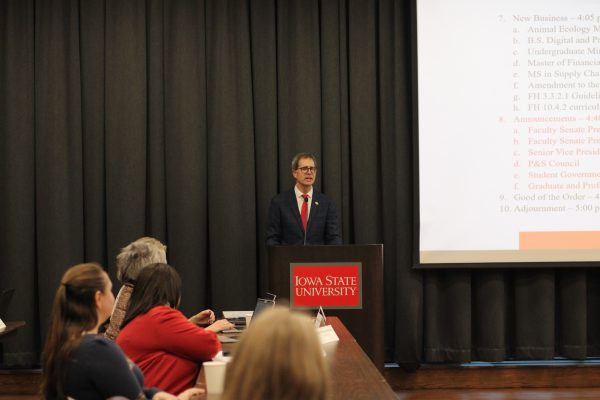Faculty Senate re-evaluates student rating impacts on employment
Provost Jonathan Wickert taking questions from the Faculty Senate on Sept. 13.
The Faculty Senate looks to examine how departments use student ratings to assess employee performance after professors expressed the ratings carry too much weight.
Every semester students can fill out an end-of-course survey of their courses and professors. Student ratings of faculty are included in a professor’s end-of-the-year evaluation by chairs. These evaluations are considered for promotions, tenure and contract renewals.
In the written evaluations of faculty members, some chairs will overweight the ratings and treat them as definitive, Sen. David Peterson, a professor of political science, said.
“They are used for everything,” Peterson told the Daily. “So when they are misused, it creates some sort of systematic problems. This may be the single most consistent complaint of faculty, not just at Iowa State. All faculty everywhere are unhappy with how they are used.”
In 2019, a task force was created between the Faculty Senate and the Center for Excellence in Learning and Teaching to propose improvements to evaluations, such as altering the terminology. The Senate heard a presentation from the Director of the Center for Excellence in Learning and Teaching, co-chair of the task force and Morrill professor in apparel, events and hospitality management Sara Marcketti, on the task force’s recommendations. Her presentation included “university-level accomplishments as recommended in the report and provided an overview of outstanding local-level decisions and actions,” Marcketti stated in an email to the Daily.
On the floor of the Senate, Peterson proposed the body should consider a vote to allow each department to create a rubric by which teaching is evaluated as a whole, which is in line with the task force’s recommendations.
“I don’t think the department chairs are doing this maliciously, department chairs are overworked, and this [student evaluations] is expedient,” Peterson told the Senate in Tuesday’s meeting. “So having that document would make it really useful for some uniformity and give the faculty the ability to push back when the appropriate policies aren’t being followed.”
The rubrics could include information already listed in the Faculty Handbook such as effective demonstrations of teaching, according to Marcketti. It could also include “student ratings, teaching materials and forms of assessment, peer evaluations based on both classroom observations and review of teaching materials, and evidence of student learning,” according to information shared by Marcketti.
Peterson said departments should be able to agree on what are the best factors for evaluation, and as soon as someone is hired, they can understand what the standards are.
While the rubrics proposal is not before the Senate as official business yet, Faculty Senate President Jon Perkins said he will talk to the executive board and “will get moving on the change.”
“Obviously, you are all involved and invested in this; we all are, right,” Perkins said. “Because we want to be excellent teachers.”
Creating a “progressive” non-disciplinary corrective process
The Senate also had the first reading of an item to alter the non-disciplinary corrective action policy for faculty. Currently, the Faculty Handbook permits department heads to send a non-disciplinary letter requiring the faculty member to review certain disciplinary procedures or do training. No punishment comes with the letter.
“The non-disciplinary corrective action policy currently in the handbook is very short, doesn’t include a lot of detail,” said Sen. Steve Freeman, a university professor in agricultural and biosystem engineering. “Therefore, it is very confusing for both faculty and administrators to figure out how to appropriately use it.”
Faculty members had reported to the Appeals Committee the policy wasn’t interpreted correctly, and chairs were using it as disciplinary action of some sort, said Sen. Olena Watanabe, associate professor in the department of accounting. Watanabe represents the Ivy College of Business on the Judiciary and Appeals Council, where the legislation originated.
Because of the confusion, this has created additional work for the Faculty Senate Appeals Committee. The Appeals Committee serves as a resource for faculty who believe they have been treated unfairly relating to salary, promotion, tenure and other matters relating to employment, according to the Faculty Senate website.
“We tried to make it even more clear in this policy that there can be no sanction or discipline without going through our conducts process,” Freeman said. “So they are not appealable if they are done correctly. If a faculty member feels a policy has been violated, policy violations are appealable. So there is still recourse to faculty who feel the policy is not being used correctly.”
The Faculty Senate proposed a three-step process beginning with a conversation between the department chair and faculty member. Then there are progressive steps to correct conduct issues before formal conduct charges can be filed, such as a letter and a warning. If the new process passes, Freeman said the Senate would also propose training for faculty and chairs to provide everyone an understanding of the change.
The corrective process is not an allegation, which is why the action is not appealable. When there is true misconduct, there is a different process listed in the Faculty Handbook.
“When there is true misconduct like sexual harassment or discrimination, we have separate chapters within the Faculty Handbook and separate procedures to address that, and that has to go through these channels,” Watanabe said. “This gives chairs the ability to direct their faculty to a better working environment.”
These progressive non-disciplinary actions can apply to student-related issues such as comments from student ratings.
“We are just hoping this will be a better process and will allow chairs to better communicate with their faculty,” Watanabe said. “Whatever issue may arise, whether it be resource-related or student communication-related, can be addressed sooner and in a more productive way.”
Ann Smiley-Oyen, an associate professor in kinesiology, said she loved the alterations to the process but asked the Senate to consider specifying the time aspect of each step. Currently, the language puts a five-day time limit for faculty members to meet with a department head after a written warning. While the rest of the language states the process must be completed within a timely manner or there is no time requirement at all.
Freeman said the committee would consider how to clarify the timeliness of the process.
“The reason there was a specific timeline for the written warning is because we hope that we don’t get there, but if we do, then we need to make sure that it is progressive,” Freeman said.
Editor’s note: This story was updated to include greater details on the student ratings of faculty from Sara Marcketti.
Your donation will support the student journalists of the Iowa State Daily. Your contribution will allow us to purchase equipment, send our student journalists to conferences and off-set their cost of living so they can continue to do best-in-the-nation work at the Iowa State Daily.










